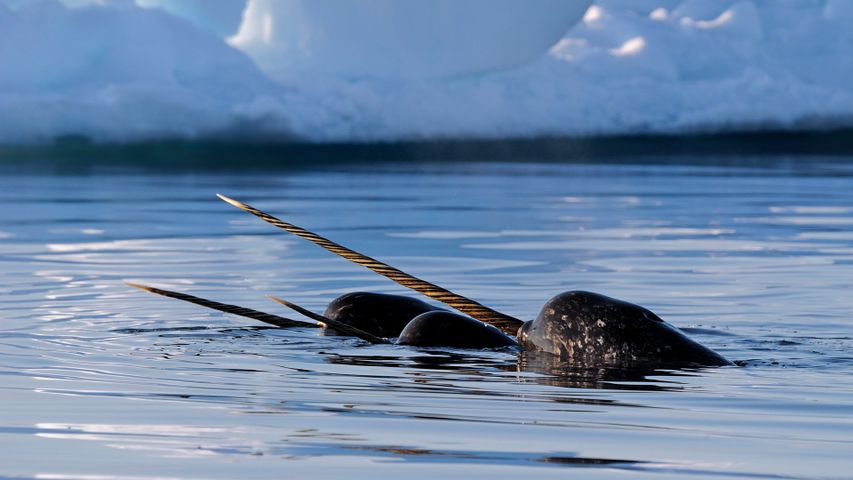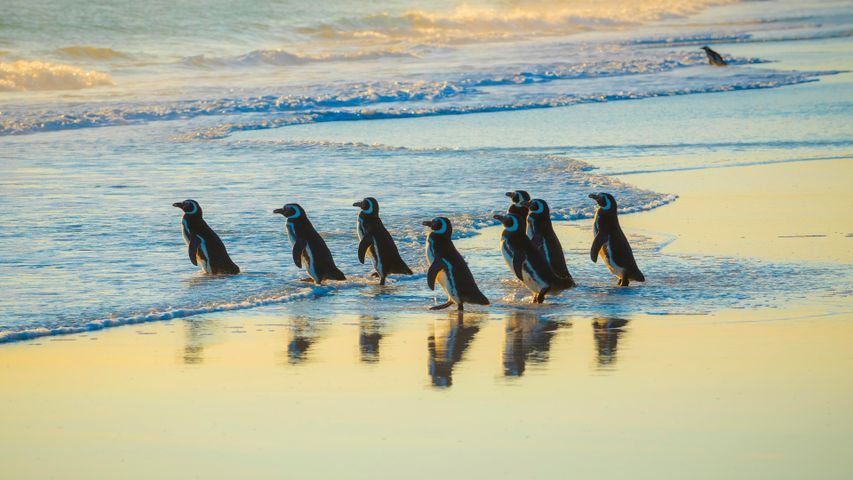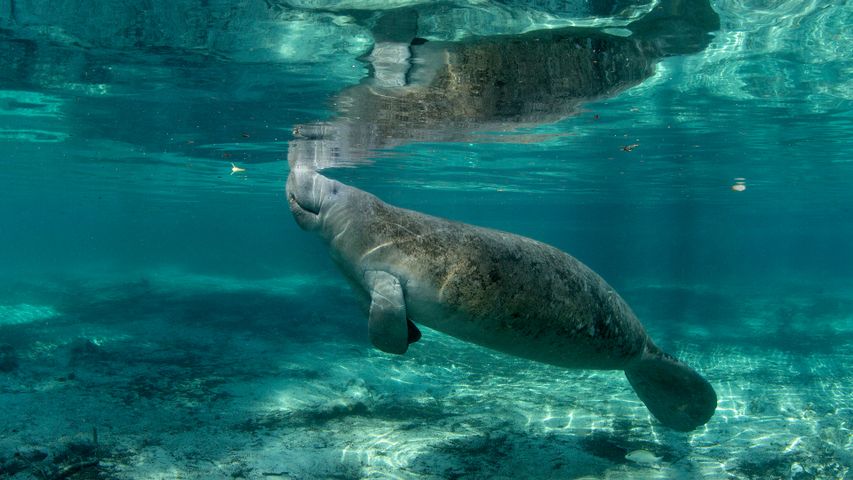A pod of narwhals near Baffin Island, Nunavut, Canada
© Eric Baccega/Minden Picture
Hooray, hooray, it's Unicorn Day!
Today is Unicorn Day, known to its followers as ‘the sparkliest day of the year’. To honour the mythical horned beast, we bring you the next best thing: a pod of narwhals brandishing their tusks in the Arctic Ocean. Narwhals develop only two teeth, but - in males especially - the left canine can grow into a three-metre-long spiral tusk. As the tusk juts out of the top of their head, it's given the whale the nickname, 'unicorn of the sea'.
For centuries narwhal tusks were sold to gullible buyers as rare unicorn horns with magical powers. These 'unicorn horns' were so prized for their medicinal and healing properties that in the 16th century, Queen Elizabeth I paid around A$20,000 for one (equal to the cost of building a castle back then). By the late 17th century, scientific facts started replacing superstitious beliefs and the unicorn horn market fell out of favour.
Today narwhals continue to inhabit the deep waters of the Arctic and North Atlantic Oceans, surfacing in between cracks in the ice. Their long-term challenges will be associated with the loss of sea ice and environmental impacts from oil and gas development.
Related Images
Bing Today Images




 Steller sea lions, Vancouver Island, British Columbia, Canada
Steller sea lions, Vancouver Island, British Columbia, Canada
 Magellanic penguins, Volunteer Point, Falkland Islands
Magellanic penguins, Volunteer Point, Falkland Islands
 Atlantic spotted dolphins near Santa Maria Island, Azores, Portugal
Atlantic spotted dolphins near Santa Maria Island, Azores, Portugal
 Manatee in Crystal River, Florida, United States
Manatee in Crystal River, Florida, United States
 European river otter, Lelystad, Netherlands
European river otter, Lelystad, Netherlands
 Humpback whale mother and calf, Tonga
Humpback whale mother and calf, Tonga
 A green sea turtle swims in the Pacific Ocean near the French overseas territory of New Caledonia
A green sea turtle swims in the Pacific Ocean near the French overseas territory of New Caledonia
 California sea lion in a forest of giant kelp, Baja California, Mexico
California sea lion in a forest of giant kelp, Baja California, Mexico


